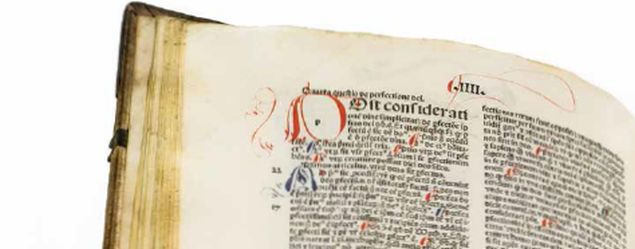
Commentaries on the Exhibit’s Works
Files
Download Commentary (183 KB)
Description
A brief commentary prepared by Robert Brecha, PhD, Professor, Physics, on the following work:
Nicolaus Copernicus
De Revolutionibus Orbium Coelestium (On the Revolutions of Celestial Spheres)
Nuremburg, 1543; first edition
Permission Statement
This item and all others in the Imprints and Impressions collection are licensed for research, educational and private use. Proper attribution must be used when downloading or reproducing this content. If you wish to use the materials for other purposes, please contact University of Dayton Libraries to obtain permission: 937-229-4221.
Contents of Streaming Media
Robert Brecha, professor of physics, explains Nicolaus Copernicus’s heliocentric theory and the impact of his observations on early scientific inquiry.




Comments
Upon printing Nicolaus Copernicus’s De Revolutionibus in 1543, the year of his death, a friend saw fit to add to the introduction a disclaimer that effectively said, “Here are some interesting ideas, but don’t take them too seriously.”Met mostly with silence, it spent two centuries on the Church’s index of prohibited books. Why was this work so intellectually dangerous? It defied the widely accepted view of the cosmos, stemming from Aristotle and delivered through Ptolemy and then the Scholastics, that the earth was at the center of the universe (and a sphere, not flat). Under Copernicus’s rearrangement, Earth was to be the third of the planets orbiting the sun, after Mercury and Venus and nearer than Mars, Jupiter, and Saturn.It took about a century-and-a-half and the work of several other intellectually dangerous authors in this exhibition … but Copernicus’s notion took hold.